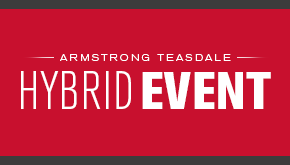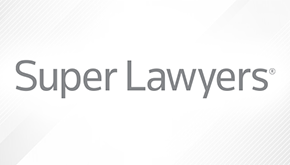In the Rush to Technology, Collaboration is Key
Technology is a critical tool for all businesses. According to a 2018 report from Deloitte, technology acquisition is the new No. 1 driver of M&A pursuits and about a third of all deals being pursued are related to acquiring technology or a digital strategy. Mainstream media has even compared the tech rush to the gold rush, especially considering Amazon’s explosive growth on the west coast. A company’s ability to nimbly license, develop and implement new technology could mean the difference between its mere survival and its ability to evolve, increase its market share and grow its customer base.
While business and information technology (IT) groups are constantly identifying new and necessary technology products and services for their companies, the lack of legal involvement is all too familiar. Often, the legal department is not brought into the conversation until after pricing has been negotiated and the “go live” date has been determined. At this stage of the process, legal counsel receives the contracts and is urged to quickly issue their approval so that work may commence. This approach is fraught with frustration for all involved. The business side, working for months on the preparations and the pricing, understandably needs to provide access rights to users and/or start the implementation process. The legal side must take time to carefully review and negotiate the governing documents. The business side does not understand why its own legal counsel is holding up progress; the legal side does not understand how it can be expected to protect the company without being given the appropriate time to review and negotiate the agreements.
When tasked with protecting an organization, it’s critical to collaborate with other departments and enforce how engaging experienced legal counsel (both inside and outside the company) can help make their initiatives more successful and achieve broader operational goals. By applying five key best practices to the technology and services acquisition process, affected stakeholders can obtain the technology and services they need on time and on budget, negotiate the most favorable terms, and identify key risks and vulnerabilities for the company.
1. Inclusion and Communication
Business and IT teams might be hesitant to include legal counsel before an agreement is ready for review, but including counsel early can drive significant value in terms of efficiency and cost. Experienced technology legal counsel will likely have negotiated prior agreements opposite one or more of the vendor candidates under consideration and might have valuable insight into how a vendor performs, which terms are negotiable, and which terms could kill the deal altogether. Legal counsel can help obtain information regarding patents and other intellectual property rights that are owned by a particular vendor and whether any claims (including infringement, privacy breaches or employment disputes) have been brought against any of the vendor candidates. Legal counsel can also identify any current or expired agreements and offer valuable information that could impact the final decision-making process. Finally, a collaborative and communicative work environment builds relationships and trust. Rather than dreading the inevitable rejection of a proposed agreement and viewing the legal group as an impediment, the business side of the company should view the legal group as a valuable part of the team and as a source of assistance and information that can help get the deal done quickly and correctly. Likewise, early involvement enables both in-house and outside counsel to identify risks and key terms, and to have the necessary time to prepare and negotiate a favorable and protective agreement.
2. Ask the Right Questions and Establish Expectations
Once the business and IT stakeholders have chosen a technology vendor, key business, IT, sourcing, vendor management and in-house (and possibly outside) legal counsel, all of the key stakeholders should meet to share information and establish expectations. At that meeting, all team members should be prepared to answer the following questions, which represent a sampling and non-definitive list:
- What products or services will the vendor provide?
- Is the service a Software as a Service (SaaS) or other online offering? Or will it be installed behind a firewall?
- If it’s a technology license: Who in the company will be using the software, how will it be used, how are the fees structured, and what is the duration of the license?
- Will there be customized code?
- Will vendor personnel be working onsite at the company?
- Who will own the technology and how will it be used?
- Is the technology mission critical to the company, and what are the risks should it stop working?
Deal-specific service level agreements (SLAs), privacy and security terms should be carefully negotiated, and it is presumed that the company’s IT group will have conducted its own due diligence and identified these concerns early in the vetting process. Where advantageous, companies should engage outside counsel and other subject matter experts who have niche technology or contract experience. Questions and issues raised by legal counsel can be relayed by the business and sourcing groups directly to their vendor contacts; and responses can be used by legal counsel to prepare drafts and negotiate vendor boilerplate terms.
3. Ownership
Companies often engage vendors to develop custom technology and/or to review and analyze current systems, processes, technology and products from which recommendations, reports and strategies geared specifically toward the company are developed. Whether a vendor creates code, integrations, or custom reports, all of these deliverables are work product created specifically for a company to gain market share, offer new products and services, and to distinguish the company from its competitors. But who owns the deliverables? In the excitement and rush to develop the “next cool thing,” business and IT groups may forget to ask this fundamental question. If not raised in the initial vendor meetings, ownership rights may not be considered at all until legal counsel receives the agreements, at which point, resolution could be difficult and could delay the project. If legal counsel is consulted when discussions with the vendor are in the early stages, they can advise their business and IT colleagues, and have the time and leverage to establish each party’s ownership rights. In some cases, an exclusive or broad license may be sufficient for the company;
in other cases, full ownership is necessary. By involving legal counsel early, ownership rights can be determined to both parties’ satisfaction before the agreement is even presented.
4. Privacy and Data Security
Privacy and data security breaches, as well as the EU’s new General Data Protection Regulation (GDPR) are in the news every day, yet companies often choose to accept their vendor’s boilerplate privacy and security terms, rather than having a set of key standards of their own. Legal counsel can assist the business team early in the process by answering questions such as:
- How will the software be accessed? Is it cloud-based or behind the company firewall?
- What type of data will be transmitted by users? Personally identifiable information (PII)? Protected health information (PHI)? Confidential information?
- Will the vendor have access to company servers and data?
- What security measures are used by the vendor to protect against hacking of sensitive and/or personal data?
Based on the answers, companies can determine whether privacy and security terms offered in the vendor’s agreement are sufficient or should be negotiated. Vendors also typically provide their own SLAs to measure technology performance and vendor responsiveness (i.e., uptime availability, speed, storage, download time, and the vendor’s response time and resolution of errors). SLAs usually have ranges of acceptable standards, and vendors offer minimal monetary remedies when standards are missed. If the technology is mission-critical such that minimal downtime or errors could be potentially catastrophic to the company, these issues should be identified early in the process, allowing definitive requirements to be presented to the vendor well ahead of agreement preparation. If business, IT and legal stakeholders are able to prepare a list of required privacy, security and SLA standards for a particular project or at a high level applicable to the majority of IT projects, vendors can be efficiently vetted, and the project can proceed with fewer deterrents and delays.
5. Duration and Out-Clauses
Vendors frequently offer favorable price incentives in exchange for a long-term contractual commitment. In the quest for today’s state-of-the-art technology, companies may not realize that they are foregoing tomorrow’s next and best options. Technology evolves rapidly – think about the cell phone you were using 10 years ago. If you were told that you could not switch to another provider or type of phone (other than general upgrades) for 10 years, would you have agreed? If you were offered an out-clause in exchange for having to reimburse the vendor for up to 100 percent of your first six years of fees, would you have agreed? These same questions should be considered when balancing pricing discounts against long-term commitments. Furthermore, many vendors charge conversion fees should your company acquire or be acquired, or should you choose to transition to another provider. Hidden costs can significantly impact future business transactions. Your company may grow and look different in the next few years; your vendor may as well. Working together, business and legal teams can assess risks and benefits best suited to the company’s short-term and long-term goals.
Building a Culture of Collaboration
In the rush to acquire the latest technology, legal counsel is often undervalued. With so much at stake, in-house and outside legal counsel should advocate for a seat at the table, as business and IT colleagues can glean valuable insights that might impact vendor selection; whether to license, acquire, or develop custom technology; and whether an online option or onsite license is best for the company. Once the business and IT teams have chosen their vendors and technology, experienced legal counsel can identify key issues and terms that should be included in the agreement. If a company’s in-house legal roster doesn’t include someone who focuses on technology and contract review, it can mean the difference between survival and success. Seek out subject matter experts who can help translate, navigate and most importantly, negotiate with the company’s best interests in mind. Collaboration among business, sourcing, IT, vendor management and legal groups can help the project proceed in a timely and cost-effective manner, minimize the company’s legal and financial liability, and create a more collegial work environment.









































